Subscriber Benefit
As a subscriber you can listen to articles at work, in the car, or while you work out. Subscribe Now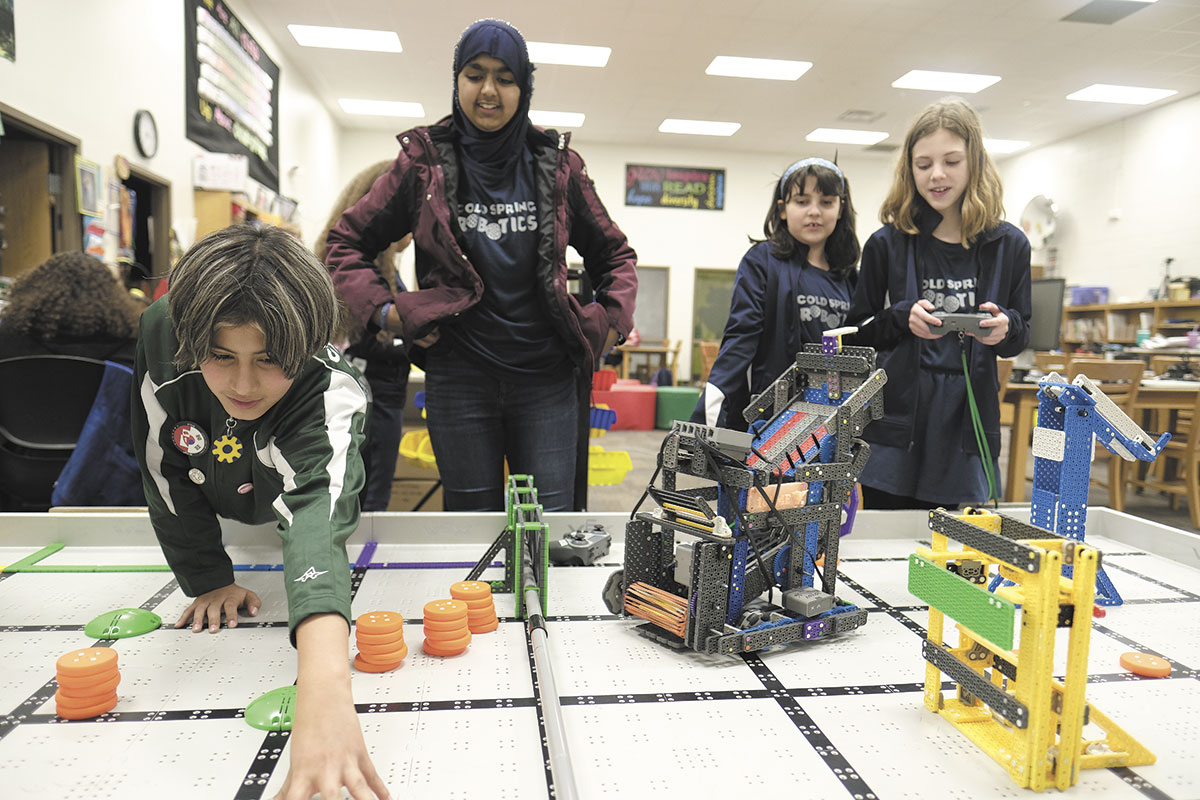
Many young girls—especially young girls of color—don’t see themselves in the predominantly white- and male-dominated fields of science, technology, engineering and mathematics, experts say.
“It’s the fear of, ‘This is too tough. This is for people who are crazy … it’s not for me,’” said Mathew J. Palakal, founder and director of IUPUI’s Informatics Diversity-Enhanced Workforce curriculum.
A program offered by the IUPUI Luddy School of Informatics, Computing and Engineering is working to change those perceptions. A $2.6 million grant from the Indiana Department of Education, announced Feb. 21, will help expand the 8-year-old initiative.
Eight high schools now receive teacher training, lesson plans, mentoring and college connections through the program, which is abbreviated iDEW and pronounced, “I do.”
The new grant aims to create interest among younger students and students of color through Luddy’s partnership with TechPoint Foundation for Youth and Eastern Star Church’s ROCK Community Center for Children & Youth.
At Arsenal Technical High School, a public school that primarily serves students of color, the iDEW program already has made a big impact.
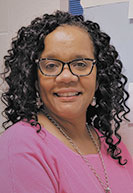
Educator Tinya Fisher had been with Indianapolis Public Schools nearly 20 years when she was asked to teach computer science and leave her role teaching finance and preparing students for college and careers. She was hesitant, but she was trained and began teaching STEM students in 2020.
“They never cease to amaze me because they have grown up with technology,” Fisher told IBJ. “It just blossoms very organically.”
Fisher said the program could be generationally life-changing. It provides a certification in data analytics from Google, which could put students in high-paying jobs even without additional training. About 300 industry businesses will hire students certified through the Google program, Palakal told IBJ.
Fisher currently has six students in iDEW. The curriculum is created by the Luddy School, taking a large weight off educators’ shoulders. It’s project-based, so students create apps, chatbots, video games and online quiz sites, which they present periodically.
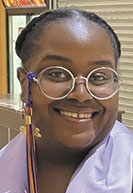
College students from the Luddy School mentor enrollees twice a week. Rebekah Holcomb, a Luddy School graduate and former iDEW student, said the mentors help their young charges see a potential career path.
“When I do see women of color in tech and that they’re thriving, they’re being successful … I love it because I’m like, ‘I can do that, too. I’m a woman of color, too,’” Holcomb said.
Holcomb, who works remotely for a California-based tech company, has been a mentor in Fisher’s classroom and does mentoring in other capacities, like leading a coding workshop for the Girl Scouts. The girls wrote Holcomb a handwritten letter thanking her for the help.
“I didn’t know I had that much of an effect on them,” she said.
The class also gives students an opportunity to visit area tech companies such as Salesforce and High Alpha and tour college campuses.
A few years ago, Fisher took a few senior iDEW students on a campus visit to IUPUI. A Chinese student who speaks English as a second language had never been on a college campus before and told Fisher afterward that it made him want to attend college.
Now he’s at IUPUI, and he keeps in touch with Fisher. She said that shows the impact this program can have.
Students can also earn up to 18 credit hours if they choose to attend college at Luddy after completing four years of high school in the iDEW curriculum, said Palakal, the program’s founder.
Combating stereotypes

The TechPoint Foundation for Youth tries to break cultural and gender stereotypes early. That’s because young girls and students of color begin opting out of STEM classes as early as middle school, according to foundation CEO George Giltner.
For young girls, anti-STEM bias is embedded in the toy aisles, Giltner said. While girls are encouraged to play with dolls, boys are offered more hands-on, building toys like Legos.
In classroom and after-school settings, young boys have a tendency to be more unruly and take control of projects over girls, who might not have the confidence to speak up in STEM projects, he said.
For Black and Hispanic students, the reluctance is partially due to a lack of role models. That’s why Luddy students such as Holcomb return to classrooms and mentor students.
To give these students more confidence in their skills, TechPoint started a grant program in 2016 that funds startup robotics teams as after-school programs at Indiana elementary schools. The grants fund robot kits, coach training and other robotics team expenses. These programs are aimed at the foundation’s priority populations: students who are underserved, female and nonwhite.
Through the new Department of Education grant, the TechPoint Foundation will bring robotics programming into elementary and middle school classrooms.
The partnership will create a “STEM ecosystem,” Giltner said. Students can become interested in robotics through the built-in curriculum provided by the TechPoint Foundation, choose to continue with iDEW in high school, attend the Luddy School at IUPUI and become mentors for the next generation of students in the K-12 programs.
Giltner, who became interested in STEM through his high school robotics team, said robotics is the perfect entry point for everyone.
“I think that’s the beauty behind [robotics] … it’s accepting of all genders, ages and academic abilities,” Giltner said.
At Cold Spring School, a K-8 environmental science and STEM magnet IPS school, the existing five robotics teams are so popular that students have to try out.
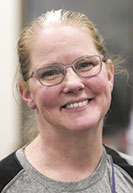
The teams are also more diverse than most: There are more girls than boys, and most are nonwhite. Many come from single-parent homes.
“When we’re out and about, our robotic team does not look like a lot of robotic teams,” said coach Genevieve McLeish-Petty.
When McLeish-Petty was in school, she said, it felt like women had two career options: teacher or nurse. She predicted that her crop of students will do whatever they find joy in. For a lot of them now, that’s robotics, coding and engineering.
Although Cold Spring has existing robotics teams and STEM classes, the grant will help fund in-class instruction.
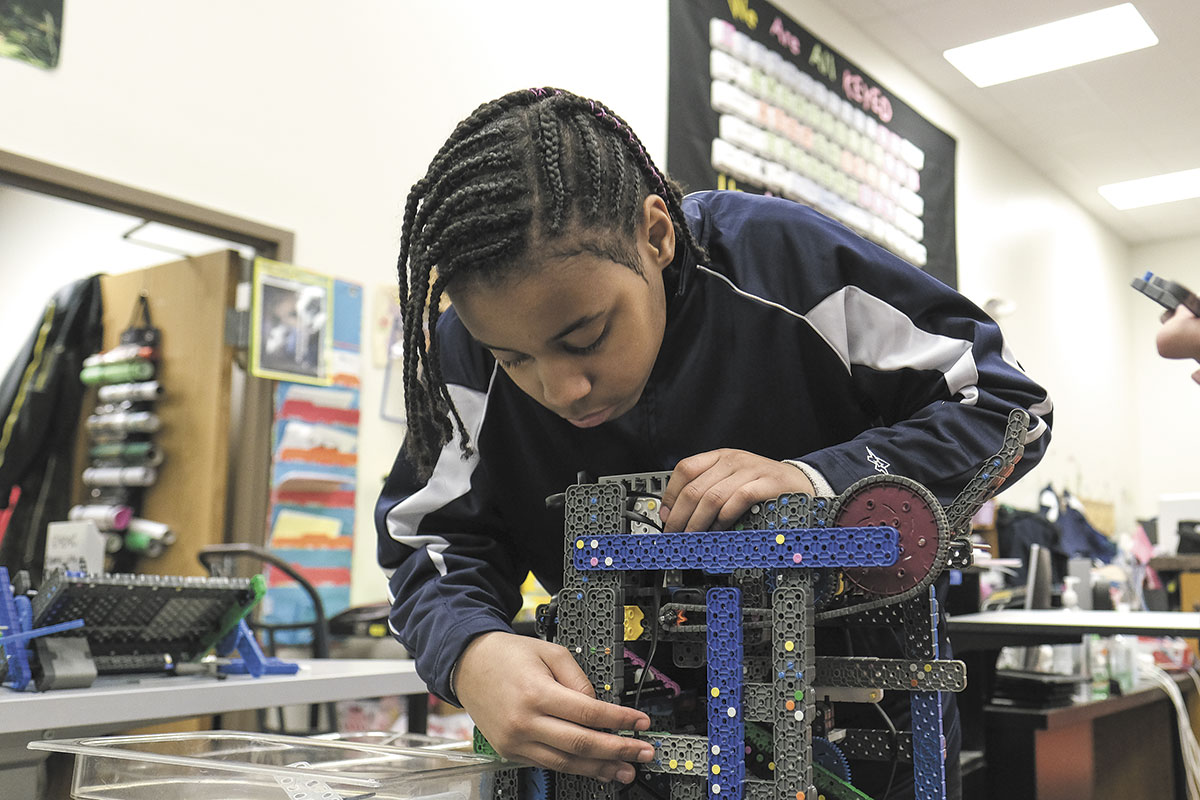
Branching out
One way the grant will be used to educate underserved children is through programming on the Eastern Star Church campus in the Arlington Woods neighborhood. The poverty rate in the area was nearly 30% in 2019. (The national poverty rate in 2021 was 11%.)
At the recently opened ROCK Community Center for Children & Youth, K-12 students already can participate in free after-school and summer programs that cover a variety of topics. Soon, the STEM grant and new partnerships will bolster the programming.
The ROCK will provide space for iDEW services for middle school students. Details of the programming aren’t fully fleshed out, but plans call for students to meet several times a week with iDEW-affiliated educators and mentors.
Speaking College, Agile Meridian and Techucate will provide STEM education at the center.
The community center already offers tons of programming for east-side youth. There have been sessions on exercise science, agriculture and even a DJ course centered on character development.
“We are intentional about offering programming that is enriching, enlightening but also has a fun component to it,” said Lela Renee Bacon, the ROCK’s director of programming.
“Some of [our kids], they don’t even want to leave at the end of the night. … It makes us wonder, ‘Why don’t they want to leave? You know, what is it that they are having to face when they leave our door?’” Bacon added. “But while they are here, we want them to feel like they can be a young person.”•
Please enable JavaScript to view this content.


The headline of this article is obnoxious and most people recognize it.
Agree with Donnie but it is nice to see a program that attempts to lift up and motivate as opposed to cry victimhood.